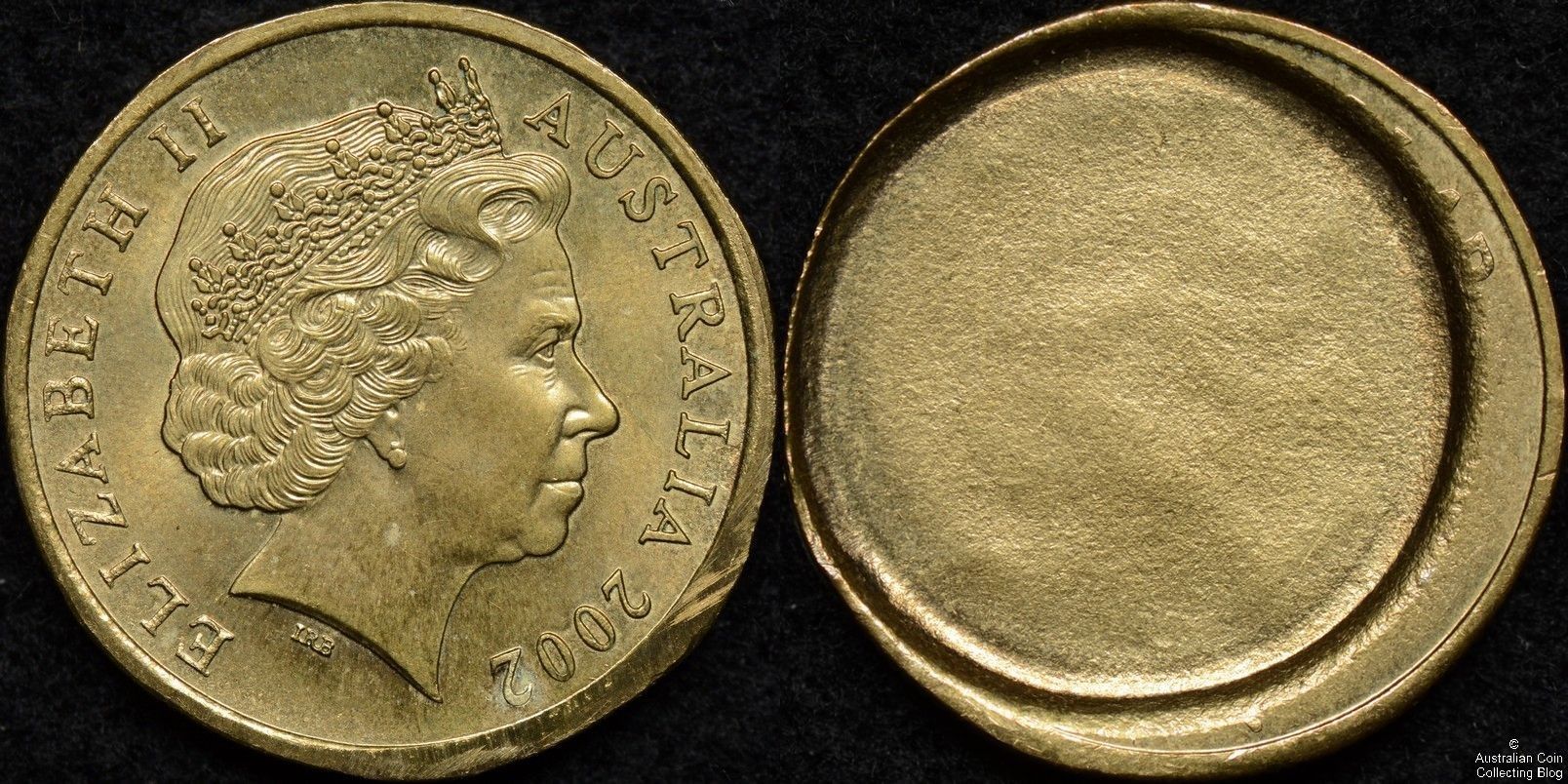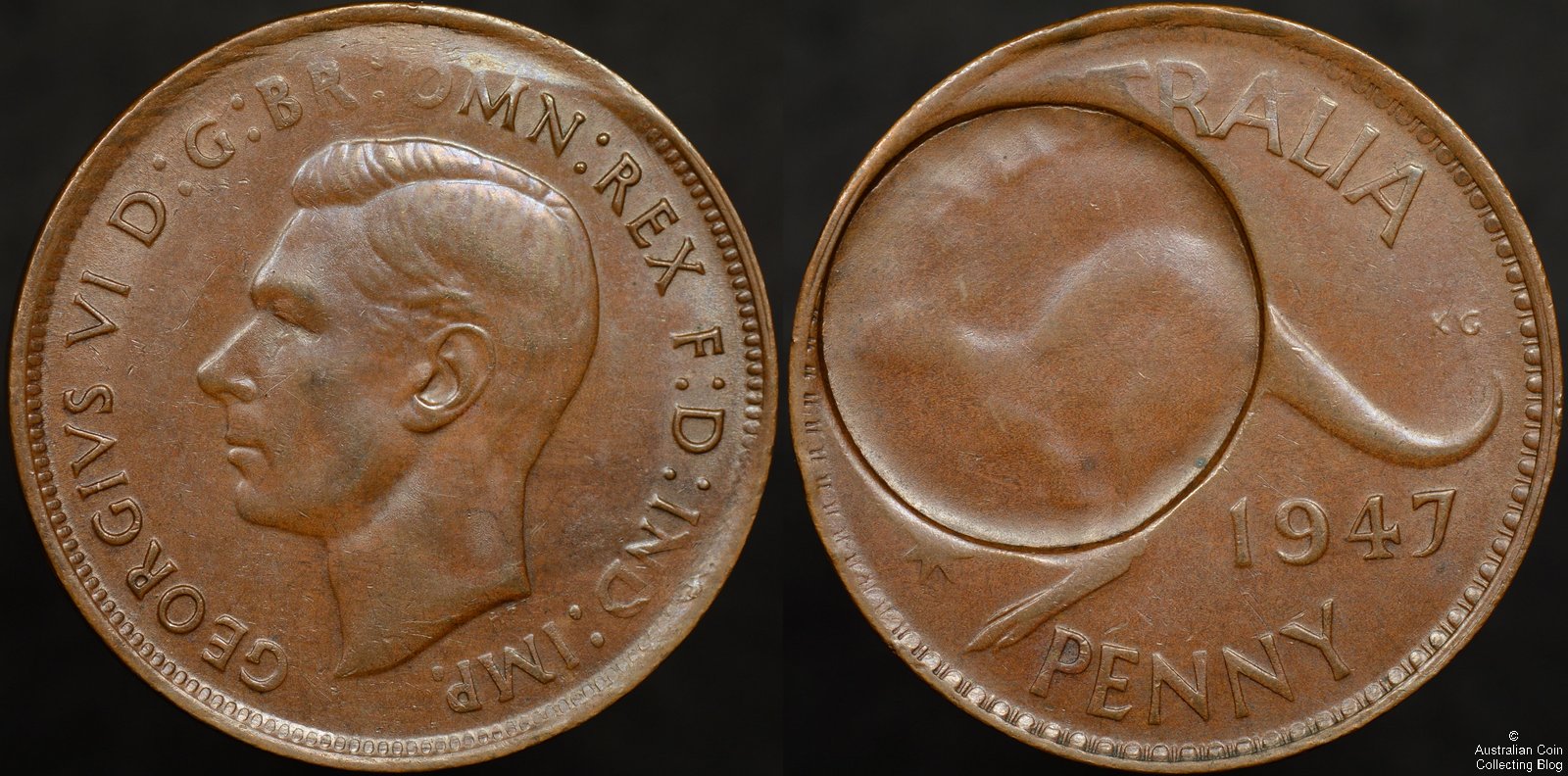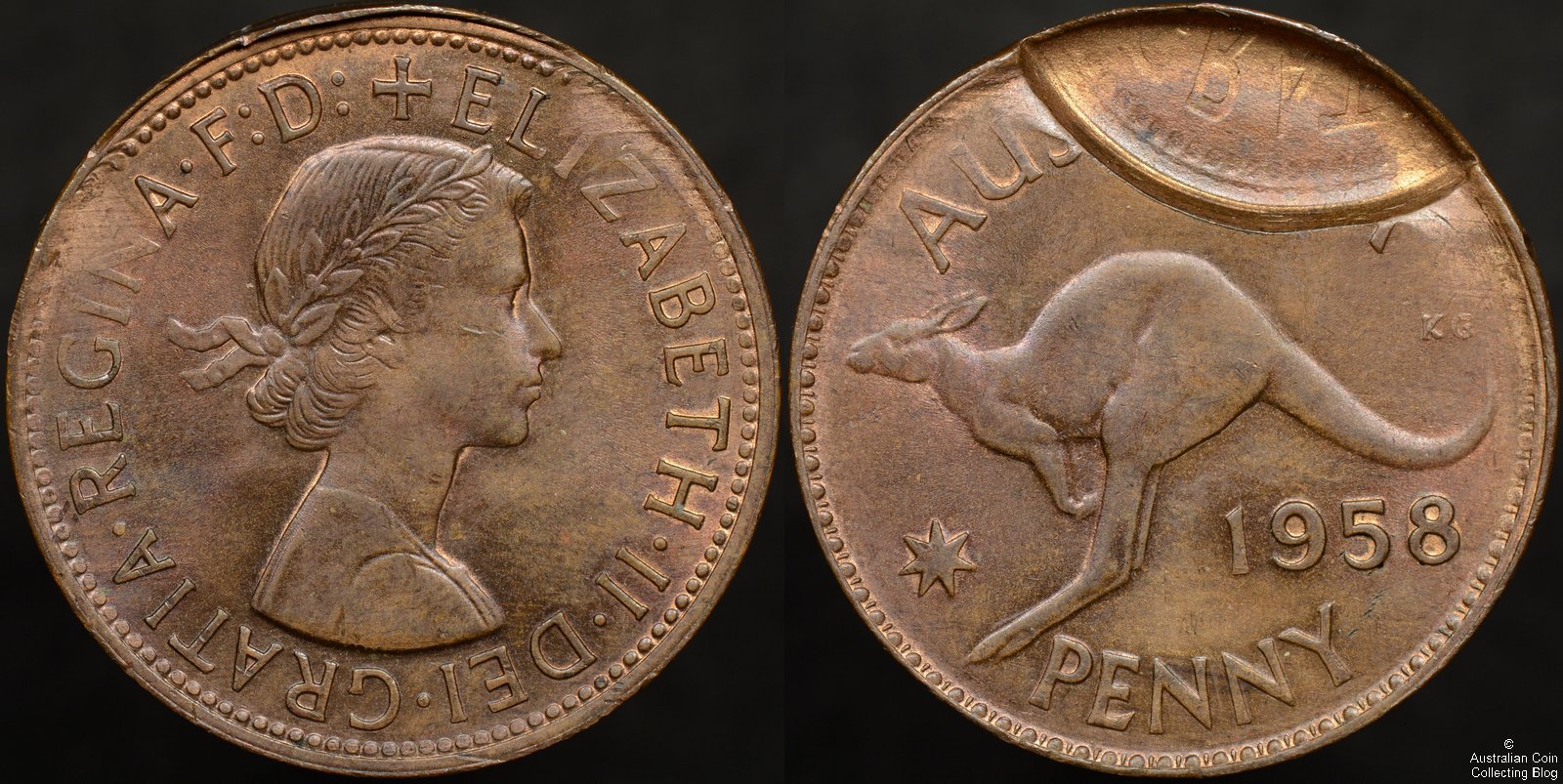Interestingly termed, an “Indent” error coin occurs when 2 planchets are accidentally fed into the collar at once. Consequently the dies will press the coin blanks together creating a partial blank on one side. This may fully or only partially obscure the design. An indent may occur with the same blank or a totally different shaped or sized blank. This will result in a depression in the lower coin the shape of the upper blank. The coin pictured above is of the rarer type where a blank of a different denomination was fed into the collar. It is an Australian 2002 Outback design one dollar where a 5 cent blank has been fed in simultaneously. The coin below is a penny with a threepence impression. Both spectacular error coins.
If the indent occurs when an already struck coin obscures the striking ie. the last coin didn’t exit the press fast enough then you will see a brockage or part brockage impression in the indented area. There is no blank design because the obscuring coin was struck but the brockage impression will be incuse and a mirror image of what it struck against. You can see this on the coin below, a penny that just caught the previous coin that didn’t escape fast enough.




